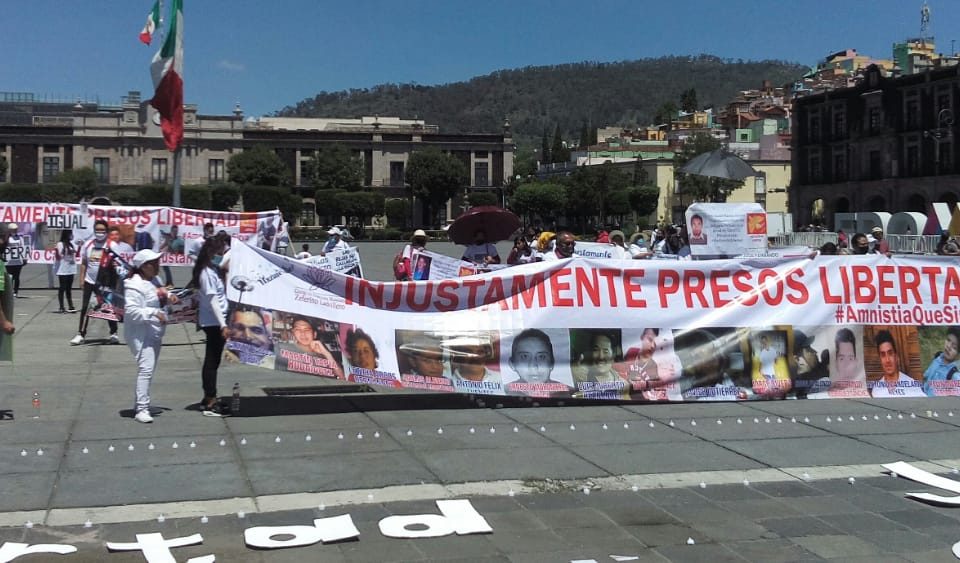
Invites IEEM to apply for political-electoral works
April 14, 2020
IEEM continues with its online graduate study plan
April 22, 2020The most transparent (and opaque) states regarding the advance of the COVID-19

Five states headed by Edomex and CDMX are reluctant to reveal in detail about the evolution of the epidemic, while a group of 27 states led by Guanajuato and Aguascalientes decided to make transparent the statistical data that allows its inhabitants to know the spread of the coronavirus in their cities and municipalities
HIGHLIGHTS
The most transparent (and opaque) states regarding the advance of the COVID-19
By Armando Talamantes and Andrea Cárdenas / Fifth Element Lab
Five states headed by Edomex and CDMX are reluctant to reveal in detail about the evolution of the epidemic, while a group of 27 states led by Guanajuato and Aguascalientes decided to make transparent the statistical data that allows its inhabitants to know the spread of the coronavirus in their cities and municipalities.
In Mexico, three out of ten people are unable to know how coronavirus infections progress in their city or municipality since the state authorities that govern them decided that this information should be kept under reserve.
Four states of the country and Mexico City, which comprise an area where almost 30 percent of the Mexican population lives, oppose reporting on the daily evolution of COVID-19 infections at the municipal level or in the municipalities, arguing that if they do so, they would violate the personal data of the patients, which could cause panic or cause discrimination.
In contrast, 27 other entities do a report in different degrees of detail the daily spread of infections in their municipalities, according to a review made between April 3 and 13 by Quinto Elementos Lab on the websites of state governments, their health secretariats, and their official social networks.
Fifth Element Lab created a ranking to rank the most transparent and opaque states. The preparation of the list took into account the updating of the data, the degree of disaggregation they offer at the municipal level, the level of detail on sex, age and pre-existing diseases of the infected if the patients required hospitalization and the ease with which the Statistical information can be found.
Since February 27, the first confirmed case of COVID-19 was presented in Mexico and on March 18 the first official death due to the new virus was recorded. However, there are entities that have so far refused to accurately report on the advance of the epidemic in its municipalities: State of Mexico, Mexico City, Querétaro, Tlaxcala, and Yucatan.
Just on April 7, Morelos left that club to join the states that decided to open their statistical data at the municipal level. "We have decided, with respect for Human Rights (...) to inform them of the municipalities where most of the cases are located," announced the secretary of Health of Morelos, Marco Antonio Cantú Cuevas, when announcing a map and a table with the municipalities where there are confirmed cases.
How much information and with what level of detail should be made public in the midst of a pandemic? it is a topic that has been debated in several countries. In Mexico, so far 27 states have decided to open their data at the municipal level to publicly document the progress of infections.
"As we have seen all over the world, access to information is one of the best ways to combat this disease because we have to know where the highest diffusion nuclei are" said Dr. Michael Bess, a researcher from the Division, in an interview of History of CIDE, and who is part of the team created by the academic institution to track the public data of COVID-19 in Mexico.
Guanajuato, Aguascalientes, and Veracruz lead the most numerous group of entities that decided to make public and document the progress of the epidemic publicly in their municipalities.
Guanajuato determined to make contagion statistics public at the municipal level since the first outbreaks of the epidemic. "Thanks to these actions, society approaches, offers support, donations, coordinates with municipalities, with institutions and helps us make decisions, put up security barriers and give real support to the population," said a spokesman for the Ministry of Guanajuato health.
"The information is offered so that society knows the cases and has the appropriate prevention measures," he explained. a spokeswoman for the Aguascalientes Health Secretariat.
Veracruz publishes municipal data on an interactive map that is easy to navigate "that serves as a tool for citizens as a preventive measure, ”said an official from the state Health Secretariat. However, the lack of common criteria for reporting the progression of the coronavirus has left more than 33 million people living in the five opaque states with no possibility of knowing how the COVID-19 pandemic behaves in their localities.
"The information is handled at the state level" responds the Secretary of Health of the State of Mexico when people ask for accurate information at the municipal level through Facebook.
Spokespersons from the Mexican health agency told Fifth Element Lab that the Secretariat does not disclose the information on infections and deaths disaggregated by municipalities "to maintain the tranquility of the population and not create panic."
Just as Morelos recently opted to open its data, other states are considering being more transparent as let the epidemic advance within its territory.
The director of Health Services of Querétaro, Martina Pérez Rendón, said that the entity decided not to share the information disaggregated by the municipality to avoid acts of discrimination or aggression against the infected people or their families, although this decision could change when the number of cases increases.
The first people infected with COVID-19 were victims of discrimination by neighbors who identified the cases, “when this happened we decided to only publish the sex and age of the person to avoid any act of aggression and more at this time that the cases are still few, maybe later we will make it known by the municipality when the transmission arrives to be older, ”said Pérez Rendón.
The authorities of Tlaxcala explained that they omit to locate the infections geographically "with the purpose of preventing security risks" in addition to considering that revealing the location of the patients would violate the confidentiality of personal data.
The Federal Ministry of Health in Mexico has not issued guidelines to try to standardize the information they offer the states and, rather, had been skeptical about offering in detail the course of infections at the municipal or city level.
"If half of the deaths are in Tingüindín, Michoacán, the people of Mexico City are going to say: I am not in Tingüindín, my risk is lower," said the director-general of Health Promotion of the Ministry of Health. federal, Ricardo Cortés Alcalá, during a press conference at the National Palace on March 29.
For the first time since the epidemic began, the Ministry of Health released an open database containing certain municipal information on Monday. However, the registry has various inconsistencies, as people who died before presenting symptoms and "pregnant men" with COVID-19 appear.
The authority recognized that the quality of the information contained in that database must improve and, in the end, this is an exercise that the federal government does and does not replace the openness and clarity that states can give to report on the progress of the epidemic.
"The statistics are given in total by the city because here, due to their metropolitan condition, there are cases of people living in other entities, and they are treated in different institutions," said an official from the CDMX Health Secretariat, explaining why that the capital does not give information disaggregated by municipalities.
The report that the National Palace offers daily the Undersecretariat for Health Promotion and Prevention and the General Directorate of Epidemiology is fed with the information provided by the country's entities through their epidemiological surveillance systems; the 32 states send their daily report to the federal government and the Secretary of Health presents the panorama National Coronavirus.
The review by the Fifth Element Lab found that the lack of uniform criteria makes the population of one state better informed than the inhabitants of another state about the evolution of the most affected confirmed cases, suspects, deaths or age groups in their location.
(This article was contributed by Efraín Tzuc and Diego Martorell)
Staff
Translator: Martín Caballero





